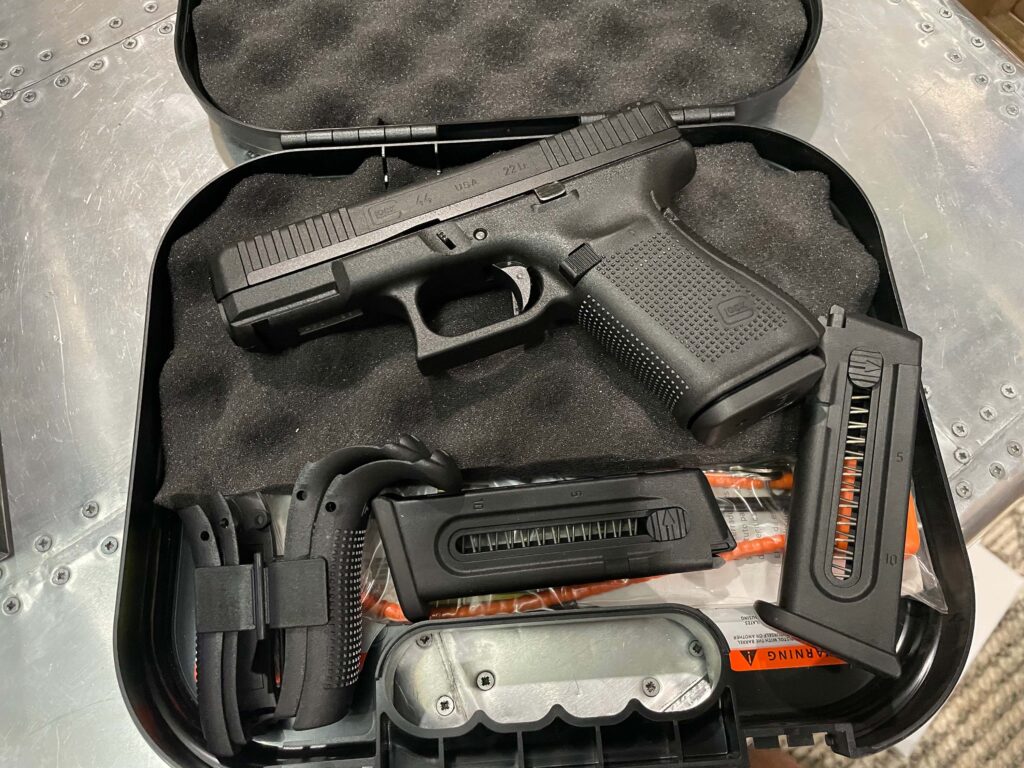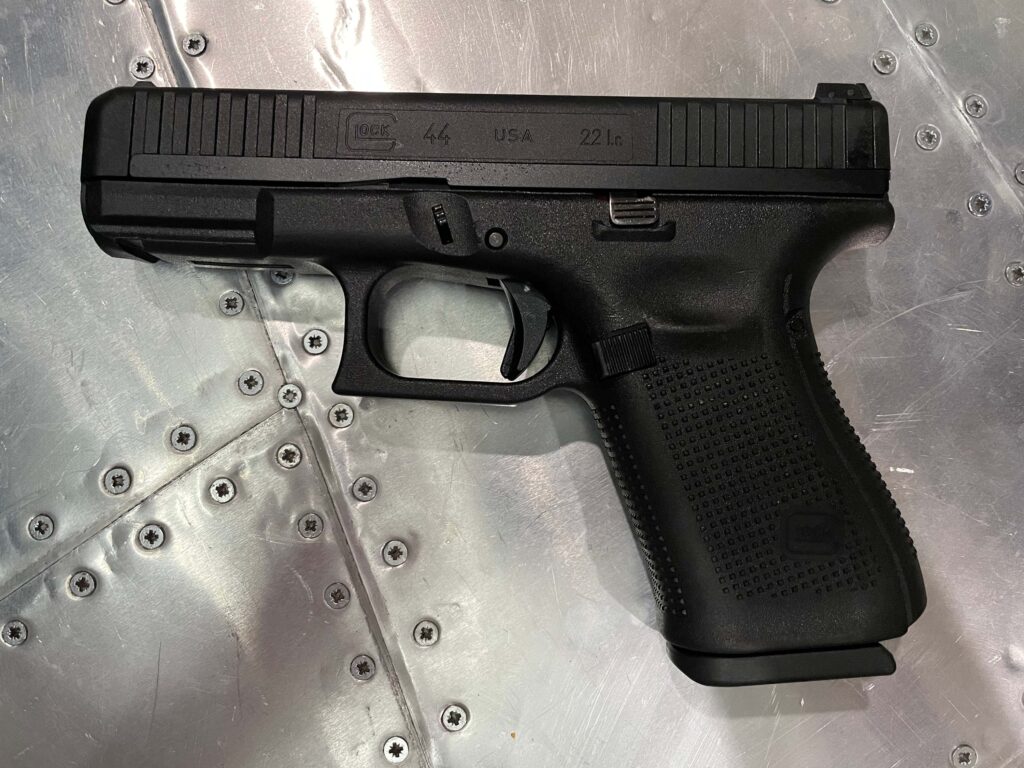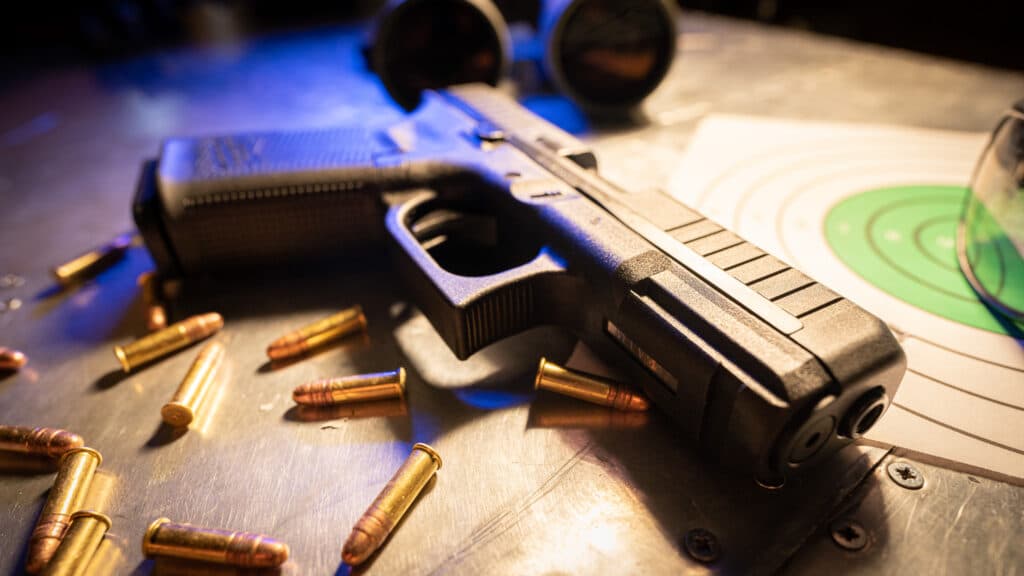Are Glock Guns Centerfire or Rimfire?
With so many different models, manufacturers, and caliber offerings available, it can be confusing to know the difference between different guns. In this article we are going to talk about Glock handguns, what models they make, and if those models shoot centerfire or rimfire cartridges.
Almost all Glock handguns are centerfire, but it does make one model, the Glock 44, which is a rimfire .22lr handgun.
Glock handguns have become some of the most recognizable, widely used, and most popular handguns in the market. If you look at the Glock catalog you will find they currently produce handguns in 8 different calibers. Seven of those calibers are centerfire, one is rimfire. For most of Glock’s history, they have produced centerfire weapons. So if you were to be handling a Glock, the chances are high that it will be centerfire.

While the chances are high that any Glock you pick up or handle will be centerfire, lets explore some of the key differences between centerfire and rimfire ammunition, as well as how to identify what model Glock you might be using. Because Glocks look so similar it can be helpful to know where to look to identify what model and cartridge a particular Glock was made for.
Centerfire vs Rimfire, what is the difference?
Determining the difference between centerfire and rimfire ammunition is actually simple and easy. All one needs to do is look at the bottom of the cartridge and see if there is a primer centered in the middle of the case. Basically if on the bottom of the cartridge if there is a circle in the middle of the case that cartridge is a centerfire cartridge. What this means is that the cartridge has a primer in the middle of the bottom of the brass case. The primer when struck by a firing pin will ignite the powder inside the case. The ignited powder will produce gasses that propel the bullet forward down the barrel until it exits.

Rimfire ammunition works similarly to centerfire in that a primer is stuck and powder is ignited in order to propel a projectile down a barrel. However with rimfire ammunition you will notice that on the bottom of the case there is no primer in the middle. In fact looking at the bottom the case it will be basically flat, with the possibility of a small stamp in the metal indicating the manufacturer and possible the caliber. Rimfire ammunition is ignited again by a firing pin, but it strikes the bottom of the case on the outside rim of the cartridge.
One of the most noticeable differences between most centerfire and rimfire cartridges is that the rimfire has a small rim on the bottom of the case. Now some centerfire cartridges’ are also rimmed, but the large primer in the center of the bottom of the case will be noticeable. The primer for a rimfire is found within that small rim of the case, and when struck ignites the powder from the edge or rim of the case instead of the center.
While the same principles are use for both types of ammunition, is one better than the other? Most experienced shooters will tell you that when it comes to extreme reliability the centerfire cartridge is much more reliable than rimfire. Rimfire cartridges do have a place and are great for practice, very small game, and cost much less than centerfire cartridges, but lack the reliability of centerfire ammunition.

Is my Glock Centerfire or Rimfire?
As discussed above, chances are if you have or are using a Glock handgun it will be a centerfire cartridge. In fact there is a high probability that Glock will use a 9mm Luger centerfire cartridge. However it could also be a .380 ACP, a .40 S&W, a .45 ACP, a .357 Sig, a 10MM, or .45 GAP.
If you are using or handling a Glock pistol you can identify the model and caliber by looking on the left side of the slide. (Make sure the gun is pointed in a safe direction and unloaded if you are looking for identifying marks!) There should be stamped the model and caliber. This is true of factory Glocks, other guns may not have this information located on the slide. Sometimes the caliber may be stamped on the chamber of the barrel either on the top or right side.
Glock does make one model of 22 long rifle rimfire. That is the model 44. Again this information will be marked on the left side of the slide. If your Glock is not a model 44 then it is a centerfire cartridge. Another way to determine the caliber of your firearm would be to look at the ammo that is used in the firearm. This could be identified from and ammunitions box or on the bottom of the cartridge it should be marked with a caliber designation. 22 LR ammunition is very small and narrow in diameter compared to centerfire ammunition, and again will have a small rim at the bottom of the case, and no primer will be present in the center.

If your are unsure what caliber your Glock handgun is, speak with a competent and knowledgeable firearm use. A local gun store or gunsmith could be a great resource for learning how to identify what model Glock you have and what ammo should be used.
What are rimfire cartridges good for?
Rimfire cartridges are cheap to produce, but still can have excellent performance in a variety of shooting modalities. Rimfire cartridges are excellent for new shooters, low noise and minimal recoil make learning to shoot with for both rifles and handguns. 22 Long Rifle the most common of the rimfire cartridges can be used in extreme accuracy competitions. 22 Magnum and 17 HMR are higher power rimfire cartridges that can be used accurately and extremely well on small game out to around 100 yards.
22 Magnum while not the most ideal self defense caliber, does have enough energy to be effective in close ranges. However in life of death situations, centerfire calibers offer more stopping power and reliability. Law enforcement agencies and military branches use centerfire cartridges for their sidearms, most commonly 9mm luger which is reliable, comfortable to shoot with practice and deadly at its intended ranges.

